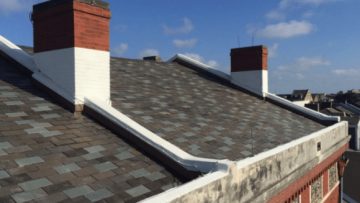At face value, the term “Forensic Architecture,” evokes scenes of crime shows, high speed car chases and storylines with suspense at every corner. While those visions do make Forensic Architecture sound much more exciting, in reality, the process is a lot more tame. Forensic Architecture looks more like architects, engineers, and designers crowding around a conference room table analyzing drawings, field verifying and examining every corner of the existing building, identifying materials used during original construction and identifying and mitigating flaws for the future use of a building.
The word Forensic comes from the Latin word forēnsis, meaning “of or before the forum.” Forensic Architecture is just that. It is an investigative architectural process that identifies issues in a building before the “forum” of developers, contractors, and designers begins to bring the plans to life. So why should you know this term? The answer is because you should never start an architectural project on an existing building without a Forensic Architectural plan in place no matter the age of the building.
A Process that Saves You Money & Time
Just like the human body, buildings are not immune to the wear and tear of gravity, daily use, and poor upkeep. As a result, no matter the age of a building, a Forensic Architecture process should be deployed; however, you will most commonly see this process in historic restoration projects today.
When we start the Forensic Architecture process, we are essentially acting as “building doctors.” By giving the building a thorough examination and completing our due diligence, we can identify potential risks such as pressure issues, structural flaws, mechanical malfunctions, and even code compliance issues, to name a few. When you know these issues going into a project, you are able to proactively correct for these issues before they become a problem and cost you time and money to correct down the road.
A Process that Preserves History
While American buildings are much younger than our counterparts across the pond, we do have many buildings across the country that tell the story of our nation. By preserving these structures with special attention paid to the integrity and originality of the building, we are able to keep our history alive. Through a Forensic Architecture process, our team pays close attention to the materials used in the original construction of a building to ensure the building remains authentic, yet up to date.
For example, when we completed the historic restoration on the Lower Pontalba Buildings that frame Jackson Square, we were diligent about identifying the original masonry and roofing materials so that we could source these materials for the renovation. Sure, we could have sourced new materials that had no historic symbolism, but by taking details like this into consideration in the process, the finished product is more authentic and maintains its historical integrity.

A Process You Should Ask For by Name
There are a lot of options in the marketplace when it comes to architects. However, one question you should be asking all of them on the renovation of an existing building is “Do you implement Forensic Architecture in your process?” If they don’t, give us a call. As experts in this specialty for 30 years, we will partner with you to complete this process no matter if we gain the whole project (although it would be nice if we did). We not only use this process to save our clients money and keep them happy but also because we know it will effectively maintain the building infrastructure for years to come.



